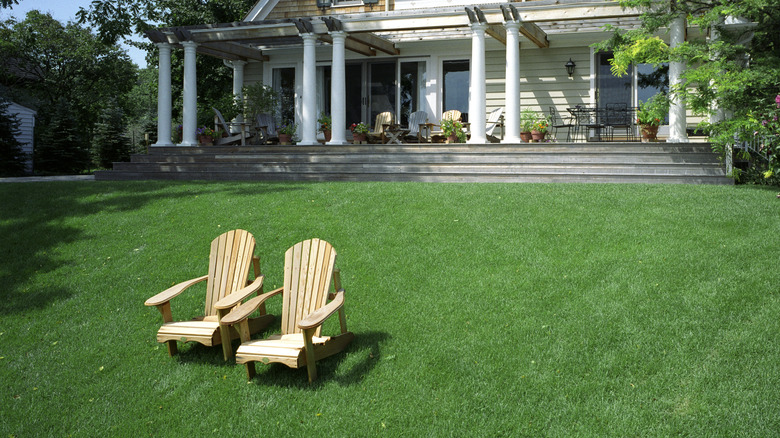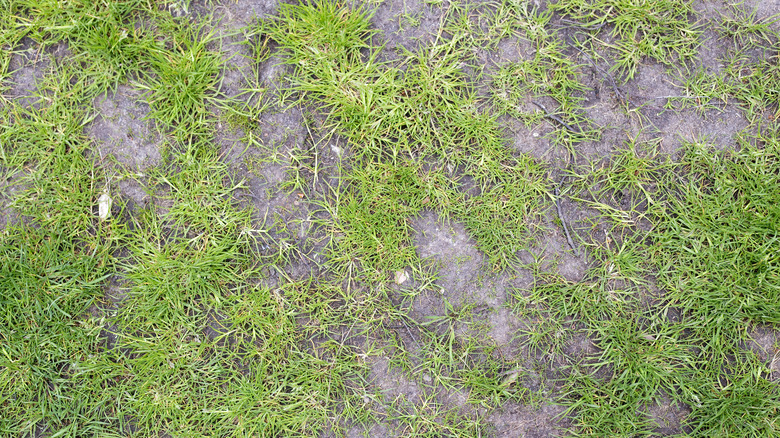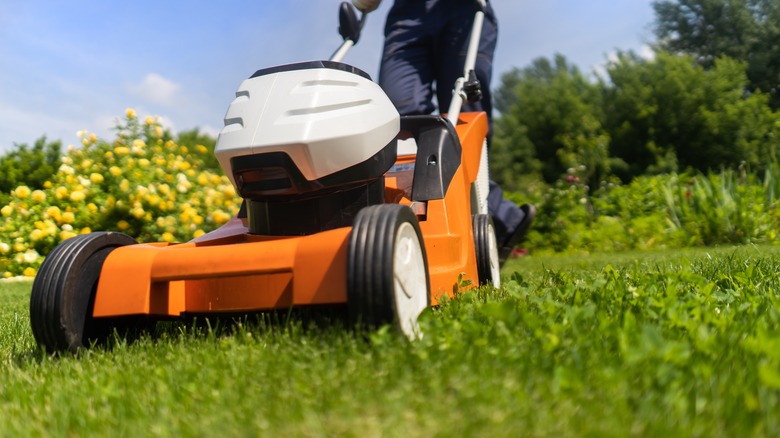How To Know That It's Time For A New Lawn Instead Of A Quick Fix
A well-manicured lawn is a source of pride and joy for all avid green thumbs, functioning as a picturesque extension of their homes. Yet, despite years of hard toiling, there may come a time when diligent lawn management practices are no longer enough to keep your green carpet from displaying troubling signs. Bald patches, invasive weeds, and uneven, dry growth may become the norm, making you wonder whether persisting with quick fixes is the right path or if it's time for a fresh start.
While the decision may not be straightforward, analyzing the causes of your lawn's deterioration can help. For instance, yellowed turf due to poor drainage can still be salvaged through aeration and adding in new sod, avoiding the need for a full replacement. However, if your lawn has been overrun by weeds, a complete overhaul may be necessary. A replacement may also be in order when your grass type is incompatible with your lawn's soil.
Know when your lawn needs a fresh start
Choosing between using temporary solutions and a complete renovation is a matter of assessing your lawn's condition. For a turf teeming with weeds and bald patches, spot treatment with weed killers and dethatching practices may do wonders. But all hope for restoration is lost if over half of the landscape gets infested with weeds. This situation gets aggravated further by the presence of large, unsightly bare patches, which are enablers of weed spreading.
A complete overhaul may also be imminent for lawns infested with pests and diseases. Insects like grubs and chinch bugs can rapidly destroy your grass blades, requiring immediate treatment and restoration. Additionally, lawns with overwatered and compacted soils serve as hotbeds for severe infections such as brown patch disease and take-all root rot that cause discolored and wilted foliage. Finally, a failure to reverse the growth of dry thatch in your landscape may indicate that your turf grass is unsuitable for the soil environment and will require a complete redo.
How to fix your lawn
The first step to restoring your lush herbage to its former glory is completely removing all the pre-existing growth with a glyphosate-containing, non-selective herbicide. Allow it to work on the turf's roots for 10 days, then reapply for unrelenting weeds such as creeping bentgrass and quackgrass, waiting another 10 days. Follow it up by mowing the area and cutting down thatch exceeding ¾ inch using a sod cutter. You may even use a rake to loosen the soil for better aeration and growth.
Further, based on a soil test, determine the grass type most suited to your lawn and sow its seeds after treating the soil with 4 pounds of starter fertilizer per 1000 square feet. Ensure that the seeds are properly covered with at least ¼ inch of topsoil to ensure the best results. Also, it is ideal to sod your turf afresh in the fall or spring, when the temperatures are relatively cooler and the probability of seeds drying prematurely is low.


